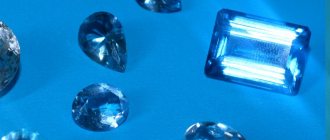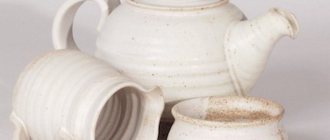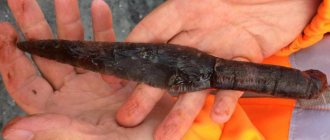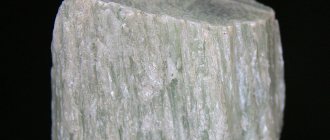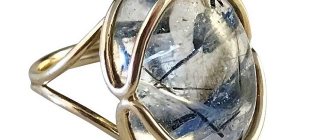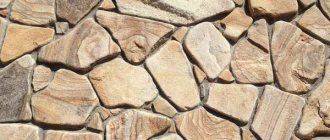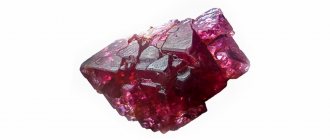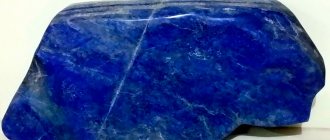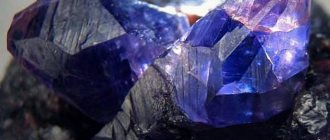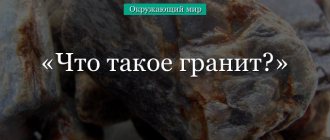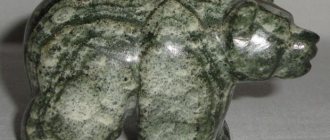Quartzite stone, from which ancient hunters and warriors made arrowheads, is a rock that, thanks to its rich color palette and high strength, is valued by people no less than ruby or diamond. The stone is formed by fusing sandstone containing quartz with spar, mica and other igneous minerals. At high temperatures under pressure, the crystals turn into massive layers.
What is quartzite
It is a metamorphic rock composed primarily of quartz, one of the most common minerals in the earth's crust. Quartzite was formed by metamorphism (structural change under high temperatures and pressure) from siliceous sediments. Most often, its formation is associated with the recrystallization of quartz sandstones or igneous rocks, such as porphyries.
The stone has a dense granular structure: microscopic grains of quartz merge into a solid mass with a splintered or conchoidal fracture. When fractured, the stone has a typical quartz luster. According to the classification of M. Bauer, the rock belongs to semi-precious ornamental stones - this order also includes malachite, jasper and jade. Basic shades: white, gray, red. In nature, quartzites are also found in other colors: light yellow, brown, blue.
Many varieties of quartzite are valuable minerals. Ferrous (magnetite) quartzites are the most important iron ore. A special variety is secondary quartzite. Deposits of secondary quartzites are formed as a result of relatively low-temperature metasomatic transformation of acidic and intermediate effusive, less often intrusive acidic rocks and their tuffs. Deposits of gold, copper, molybdenum, polymetals and pyrites are associated with secondary quartzites.
In our country, the most valuable and beautiful variety is crimson Shoksha quartzite; quartzite is mined on the western shore of Lake Onega in Karelia.
History of origin
The origin of quartzite is very ancient. The first tools made from it were discovered during archaeological excavations at established places where the first people lived. For example, during excavations that were carried out in Mesopotamia, tools were discovered, the age of which, as was later established, was about seven thousand years. Quartz also had a place in the works of ancient philosophers: Theophrastus and Pliny the Elder. Oddly enough, quartzite is very popular.
The main deposits of the stone are Russia, the USA, African countries and Eastern European countries. Since quartz is 90% of the composition of most rocks, it is rightfully considered the most common mineral among all others.
Quartz is extremely popular among professional collectors. And its raw crystals can very often be found as souvenirs.
It is used in the manufacture of jewelry, which can be purchased even by not very wealthy people. But there is an exception to this rule - rose quartz. It stands on par with precious stones or is used in the same piece of jewelry along with gold. Such jewelry becomes the most valuable and undoubtedly, their price tags are worth quite a large sum, and the price is sometimes so high that even diamond jewelry is lower.
Properties of quartzite
- High hardness. On the Mohs scale, quartzite has a rating of 7, which corresponds to the hardness of quartz. The mineral can be processed with diamond and scratches glass. Such hardness sharply limits the possibilities of stone processing. This feature affects the final cost of facing materials.
- High density. The average density of quartzite is 2700 kg/m³. For comparison, the density of granite is 2600 kg/m³, the density of sandstone is 2250 kg/m³. The higher this indicator, the heavier the stone.
- Fire resistance. Structural changes in stone begin at temperatures above 1700°C, which makes it an excellent raw material for the manufacture of refractory materials. For example, ordinary clay brick can withstand temperatures of 1350°C, fireclay - 1580°C.
- High compressive strength – up to 450 MPa. According to this indicator, some types of quartzite are superior to granite and comparable to steel. Artificial building materials are not able to compete in this regard at all. Thus, heavy concrete of class B22.5 has a compressive strength of only 30 MPa.
- Durability. The first signs of stone crumbling appear after 250-300 years. This is facilitated by the good frost resistance of the mineral and its resistance to alkaline and acidic environments. Unlike marble, this stone does not react to hydrochloric acid.
- Low radioactivity. Quartzite belongs to class 1 building materials, that is, it can be used in the construction of public and residential buildings.
Types of stone
Quartzite classification is based on hardness and color. There are four main groups in total. The names are given according to the base shade. Coloring and the number of defects are factors that determine the price tag of a piece. Differences between groups are observed in distribution and use.
Varieties:
White quartzite. Often found in nature. The subspecies exhibits an average hardness score of 9 points. The color is light, heterogeneous. There are a number of gray, yellowish, black veins, stripes and spots. Used in construction and decoration.
- Raspberry quartzite . The color range ranges from pinkish tones to red, even brown shades. Hence the name. Not often found in nature, but in terms of application it is one of the most popular subspecies. The breed's strength reaches 10 points.
- Grey . The subtype is widespread in natural conditions. There is a gray-blue surface that sparkles in the light. The strength is listed up to 8.5 points. The variety is valued in the construction of cathedrals, temples, as well as in the equipment of sarcophagi.
- Ferrous quartzite . Color: red, brownish shades. The main feature of the group is the veins of iron oxide, which resemble stripes in shape. Strength depends on impurities, minimum - 7 points. This variety is used in metallurgy and construction work.
In addition to the listed subspecies, a yellow mineral is found. The structure is permeated by inclusions of orange, sand, and ocher shades. Black quartzite is a representative containing a large percentage of mica. This proximity gives a characteristic shine.
Lumen is rarely mined, only in Brazil. These are nuggets with iridescent colors of white, grayish, blue, and green colors.
Composition of quartzite. Minerals
The mineral composition of quartzite is predominantly quartz (quartz content in the rock reaches 88-98%), containing iron hydroxides (2-3%), silicon and chalcedony (4-5%). The stone also contains impurities of mica, talc, feldspar and other minerals. Quartzite is named according to its mineral composition (for example, kyanite, magnetite), and the proportion of the word-forming mineral must be at least 5%.
Separately, secondary quartzites are distinguished with the inclusion of sericite, alunite, corundum, topaz and other minerals. These are metasomatic rocks in which the primary composition has changed significantly as a result of reactions between minerals and solutions through which the rock is deposited.
Quartzite mining
The main deposits of the mineral are located in Russia (Karelia), Ukraine (Krivoy Rog), and the USA (Lake Superior). Like any other natural stone, quartzite is mined using a quarry method. There are three ways to mine stone:
- Explosive. Holes 10-20 m deep are drilled into the solid layer of rock, and explosives and detonators are placed in them. Several dozen wells are used to undermine the formation. This is the cheapest method, leaving a large amount of waste, and is relevant when crushed stone is needed for construction work.
- Air cushion method. Holes are drilled in the mining area and filled with air under pressure. As a result, a fault is formed, breaking off the block from the main massif. The method does not lead to the formation of microcracks and is generally more gentle compared to explosive.
- Stone-cutting. Blocks of quartzite are cut out of the formation using rope stone-cutting machines. For this purpose, special diamond-coated cables are used. The resulting blocks are removed from the mining area by heavy cranes.
After extraction, the resulting material is sorted, crushed or sawed into slabs in a specialized workshop.
Legends about the gem
According to ancient legends, dwarfs used to walk the earth and were involved in the construction of large stone buildings. An example is Stonehenge, in the rows of which there are quartzite structures. The Icelanders have a popular myth that tiny people lived underground and turned to stone when exposed to sunlight.
It is believed that the sarcophagus of Tutankhamun, the ancient Egyptian pharaoh, is made from the yellow mineral. Many people know about the curse that came into force after the opening of the tomb, which took people’s lives. The sarcophagus was carved with an image of a goddess with her hand raised. There is an opinion that this woman’s gesture is a warning, urging her to come to her senses and go back.
Use of quartzite
- Road and capital construction. Crushed stone from low-grade quartzite is used to form concrete mixtures and as a cushion in the construction of foundations, supports, and laying asphalt.
- Metallurgy. The mineral is used as a flux that lowers the melting point of metals. Crushed crushed stone is used as an additive, with the help of which the slag is separated from the metal melt.
- Production of refractory materials. Crystalline quartzite is used in the manufacture of silica refractory bricks for laying heating furnaces. Dinas quartzite contains 96-99% SiO² with a minimum amount of alumina and alkalis.
- Bath stone. Rolled quartzite, especially crimson, is used to organize heaters in baths. Large fractions of stone are placed in the lower part of the heater, and small fractions are placed in the upper part.
- Interior design. Quartzite is widely used for finishing floors, window sills, sinks, and stairs.
- Facing. Due to its good frost resistance and resistance to aggressive environments, this mineral is suitable for exterior decoration of buildings, arrangement of gazebos and fountains. It is often used to design garden landscapes, recreation areas, and house terraces.
Gem Features
The main part of the rock is quartz (about 70%). Additionally, it contains some metals: iron, aluminum or calcium. This all explains the natural hardness, comparable to alexandrites and diamonds. Therefore, stones are difficult to process, but easy to split along the line of veins.
Distinctiveness of natural substance:
- structure represented by small grains;
- wear resistance, fire resistance, frost resistance;
- the appearance of a reflection of a different color in bright light;
- sparkling in some specimens due to shiny inclusions;
- durability, resistance to high humidity;
- lack of reaction to alkalis and acids;
- inability to accumulate radiation particles.
Resistance to moisture and temperature changes, inability to absorb water determine the use of quartzite. Durable nugget has long been used in the construction of baths and saunas. The marble-like mineral is used to line the walls of buildings, lay out mosaic floors, and decorate sidewalks and flower beds.
Quartzite in the interior
Quartzite is an excellent material for creating sophisticated interiors. This stone is perfectly polished and polished - polished slabs are used for cladding walls, floors, fireplaces, making stairs, kitchen and bar counters. Of particular value is the crushed mineral with the texture of a “rock” - it imitates the structure of untreated stone with splits. There are three main colors of quartzite:
- White or white-yellow. The most popular type with a varied texture, gray or black inclusions in the form of spots and stripes.
- Grey. It features an impressive silver-gray surface.
- Raspberry or pink. Relevant for the manufacture of statues and other small and large architectural forms. Suitable for creating ornaments.
Quartzite goes well with other natural and artificial finishing materials. This mineral looks especially impressive in combination with marble, sandstone or granite.
Go to the quartzite catalog.
